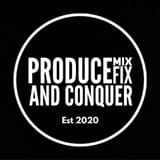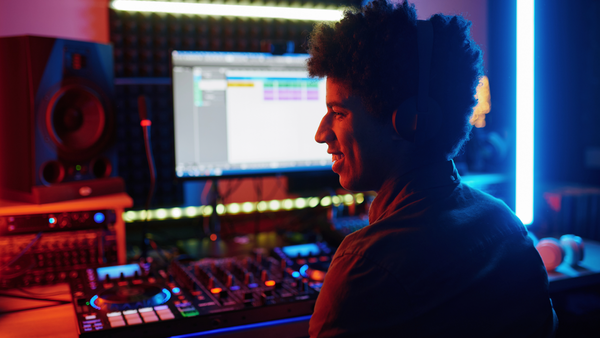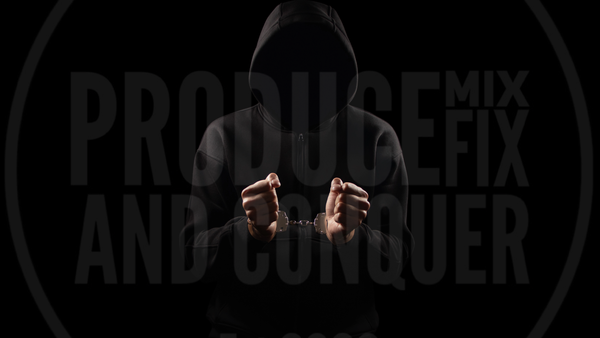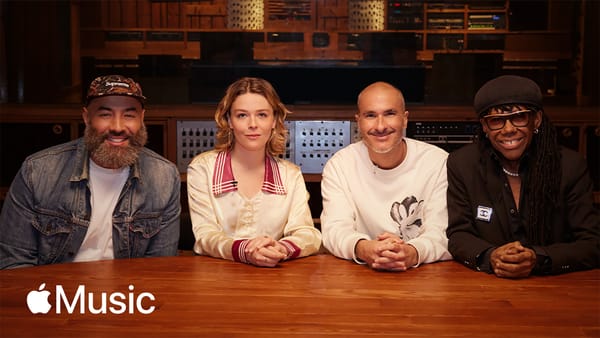The Ups and Downs of Location and Live Recording - Get Ready to hit the road -By Adrian Ady Parzentny
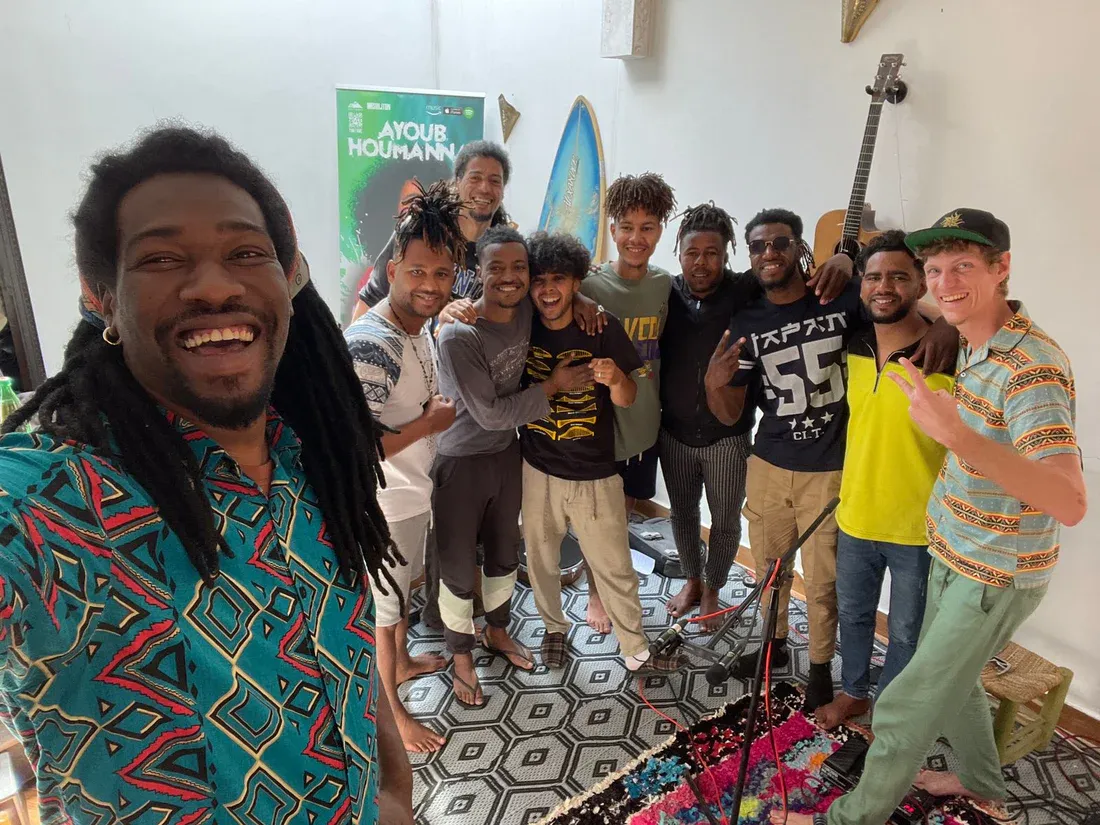
The Ups and Downs of Location and Live Recording - Get Ready to hit the road
Today I invite you into my world of transforming any place into a temporary recording studio, what to take care of as well as its positive differences to traditional recording and the downsides.
We answer the question:” Can I get a good sound inside my rehearsal room?” and look at all the important factors, listen to examples, and discover practical tips.Are you ready? Perfect, let’s hit the road…
Why mobile productions?
What I thought initially was a course when I started to record bands abroad with limited finances and used, affordable, gear from eBay, turned out to be crucial in my development as a recording and mixing engineer.
Driven by curiosity, I switched from Musician to handling technical parts and production, simply because I missed the contact with different musical styles. In a typical rock band is not really space for Sinti and Roma music and my stoner metal band wasn’t as much into cumbia as me.
Living in Poland with a limited amount of studios, I realized quickly that the doors are closed and it will take a while to get the experience as an assistant .. and do I want to make coffee and bring out the garbage anyway (again?), I’m soon in my 30s and started so often from zero.

Opening a commercial studio would take years in the basement and from my 10 years of traveling the world I wasn’t sure if I want to miss the sun for such a long time.
The alternative solution came at night: A mobile recording studio, traveling and recording musicians from around the world. This would keep me closer to the heart of the music, and cultures and be a good lesson to learn my new chosen craft firsthand.
Instead of paying monthly rent for a space and pumping in a loan for a nice studio, I simply bought a variety of Microphones (Yes, mainly SM57s) and 2 Interfaces which allowed me to record 16 channels at once. My first gigs were with local, young metal bands offering to record 4 songs for free in the rehearsal places which we could get overnight for a cheap price (5$/hour)
The acoustic was good, and the equipment… well, heavily used! The band was young and I - inexperienced. The perfect mix that all of us learn good lessons in the next few days in many sleepless nights trying to fix stuff.
Fast I realized that the foundation is to know your gear and pick the right mics, set up the right levels, and what phase issues really are. The band quickly learned during overdubbing sessions what a click is, why it is so important, and why it’s better to be sober during the record sessions - Win : Win I guess…
Day and night I was watching sound editing tutorials and had immediately hands-on experience fixing the drums and bass performance for the next day to overdub guitars.
Once, at 2 am, I was even listening to the track and could swear there was a demon choir singing inside the record.. Did I lose my mind already? Listen for yourself!
[SNIPPET FROM TRASH MIC]
https://on.soundcloud.com/yfSS7
Later I found in my mess of multi-tracks that it was the heavily distorted trash mic: A 60’s Phillips vocal mic I got for 10,00$ which looks like an electric shaver.

Why do I share this with you? Because there is no way around the hands-on experience and we will never be ready or prepared only watching youtube, if we don’t dare to take this first step to do something - with someone! Band handling, project management, pricing, skills you never knew you need, all these experiences teach us, and location / live recording is the best teacher to master it - fast.
What microphones should I have with me?
While we look in a traditional recording studio for THE best microphone possible (and I love a good, old classic on vocals…) in location recording it’s quite the opposite.As the rooms we’re recording in are not meant to be recording studios, we need to maintain a different mindset. Because sound, what we record, contains 3 factors: The source, the room sound (incl. early reflections and reverb), and microphone/preamp choice.
If the room is well-treated, you want to get all the details possible to have the best representation of the vocalist and shape it later so it fits the song.
When recording in a Moroccan clay house in the desert, well, you rather focus on the source and don’t want too much of the room sound in your recording which can vary from birds chirping, scooters driving along, or neighbors screaming that food is ready (yummy).
When choosing a mic locker for location recording, keep one thing in mind: Variety of sounds!

I want to share this lesson from my early days when recording with a Portuguese artist Costa, an amazing guitar player preparing for his first solo album. So, I was new and wanted to do something special and we used 8 Mics on 2 guitar amps and(!) 2 bass amps in 2 separate rooms with 4 mics + DI, sending out a total of 90+ Guitar and Bass tracks to the producer in Portugal per song.
He freaked out! After yelling his soul out he advised us to take care, when using different mics, to have a variation of sound, not 6 times “similar sounding” tracks. It stuck with me since then - Not only because of fear to freak him out again but because it made sense.
When recording live and in any location, you don’t want necessarily only tube mics that get every single detail because then it will be hard to put them together in the mix. You will EQ like crazy but won’t find any variety which can make the final song rather 2 dimensional.
The best recordings start with the mic choices, which means a variety of robust, dynamic microphones for close micing, a bunch of condenser mics for more detail and the full sound of the overall picture as well as clear vocals and optionally one or two tube mics for the room sound if you have the luxury.
Another point is to keep in mind: When traveling and changing places constantly with the gear, there’s a high risk that they get damaged, dirty, wet, or broken. It’s inevitable and you need to take good care of them.
We recorded, for example, a few live performances in Armenia with the Naregatsi Orchestra and Nova Folk Ensemble, so the mics traveled thousands of kilometers. Listen here!
In the video, you see that the room is not the best but the source, the musicians, were incredible! I’m using only 3 Lewitt condenser microphones here to get the core of the orchestra and more clarity of the highest elements, the Qanun with all the bleed from the other instruments. I have them with me as I know the pattern is cardioid which cancels out the dreadful reflections from the low ceiling. This provides me with an overall image of the performance.For more clarity and contour for individual elements, I used dynamic mics, working with the cardioid pattern again to reduce bleed from other instruments. If there were more than one of the instruments, for example, 3 Oud players, I wanted some bleed in each mic from the neighbor as it made them sound fatter, and brings them more together as one unit.

On this journey, I hadn’t a tube mic as I went by plane. These things are heavy and not crucial. When traveling with the car I use the tube mic mainly in a nice spot of the room as it captures great top end and brings in more depth, blended in with the rest of the mics.
It’s a bit risky to have it with me as the microphones are under harsh conditions, from hot summers in the desert with up to 50 degrees Celsius to the Greek mountains in winter by -10 and often driving rocky roads that shake the gear around. I’m always scared to plug-in the tube mic one day just to notice that the membrane or tube is broken.
So keep this in mind:- Strong Dynamic Microphones that won’t break
- 2 / 3 Large Condensor Microphones
- 1 Stereo Pair of pencil condensers
- Optional to wow your clients: 1 or 2 Tube Mics
Live Recording vs. Overdubbing
Location recording and Live recording can go hand-in-hand and are great practices to improve your engineering skills. After recording in the Sahara desert with the band Daraa Tribes I learned a lesson and switched to a hybrid model. For the vocals in the song Waha, I used a condenser microphone and didn’t think about the bleed of the BIG djembe that Belkher was playing while singing. The results: 2 nightshifts trying to fix it with massive automation moves. You can see the whole microphone setup here:
https://youtu.be/U41_QTky1OcSo I thought: What makes every song so special? What brings a song to life? It’s the same what keeps us alive as well: The heartbeat, the groove!
Since then I started to record the rhythm section together as it was super tight and then started to overdub solos, vocals, and backing vocals as well as additional percussion.
Then the Band Izouran N-Sahara hired us and we went to Mhamid El Ghizlane to record in their traditional family house and wanted to work with a click and overdub every part step by step. The result in this situation was not as expected because the band never worked like that before and wasn’t prepared to be on time. Also, there is no click-track when sitting in the desert by the bonfire and playing together, so if we had the basic layers down after a few hours there was definitely no groove - you could hear the tension, rather trying to hit the click than serving the song. After some hot debates and a loss of motivation, we went for the traditional Tajine, had a break, and decided to record the music while overdubbing the vocals.
What you see here is a bunch of close mics with amps in separate rooms, loud enough to be heard by the rest of the band, and low enough to avoid too much spill.In the middle of the room, I set up two Mics in Mid-Side format, a tube mic in Figure 8, Condenser Mic in Cardioid, and on the opposite 2 small pencil condensers in 120 degrees.
The downside of live recording is a way longer setup time with a lot of trial end error so a patient band is needed. Talking with them in advance that it might need more time will be beneficial. Also, it will be difficult to make a quick fix afterward as every element will be in almost every microphone. Last but not least, heavy-phase issues might occur which can make your mixing life difficult. Oh, and a new mixing mindset is required, too, as it’s not the same mindset as mixing separate, isolated multi-tracks.
So why bother?
The advantages are huge: A massive learning curve as each session in each location will be different so you will learn to “read a room” while training your ears. And while the path might be interesting for us, the end listener and band care only about the final track.Having a tight band playing together at the same helps to capture more than just sound: You make an audio-visual photograph of a performance and capture the emotions.
The differences are when the band speeds up a bit, slows down here and there, and brings more life into their song. If you captured a good variety of sounds the mixing stage will be easy and more fun as you start with the room mics and adjust the close mics to it:
Guitars were on the left side of the room? Then pan it left without further wasting time to find the “perfect” place for them, it’s already printed! Beautiful exercise to make quick decisions and stick with it. And if you need to cut the best parts of 2 - 3 takes together without a click you will quickly learn how to edit like a pro.
Industrie Professional view on live-recording
On top of that, I learned a lot during long, generous conversations with Mike Exeter (Toni Iommy, Black Sabbath, Judas Priest) and Moses Schneider (Several #1 Hits including Kreator, Beatsteaks, and many more) about how they prefer live recordings and human interaction in their recordings. Moses shared his view about the click: It’s too predictable and boring if the songs never change in tempo and stay “static”. Mike explained to me how to drum grooves in the same tempo, especially when looped, become boring for our brain: Once any element repeats, our brain turns off as it “knows already what’s next”. Last but not least our dear friend Sylvia Messy who calls it “Adventure Recording” for a reason. Recording live and in any location with whatever you have, she’s absolutely up for it!From here I can heartily recommend her book “Recording unhinged” which took me the fear of doing this project with confidence.
What are phase issues in audio?
This is a huge topic as it’s crucial to understand what phase is and how it can mess up your recordings if not taken care of during live recording situations, I’ll explain it quickly and might create a more in-depth post about it in the future:
Sound is Audio Waves that we receive over the air, pack out your pen and paper, and we’re going into the world of physics - that’s how simplified soundwaves look like graphically:

I like it easy. This would represent one sound, let’s say it’s 440 Hz rotating between Positive and Negative (It would be a beep tone) The easiest way is to imagine this chain:The sound goes to the Microphone with the phase starting positive, moves on through your audio interface, and directly out to the speaker. The speakers cone moves now physically in and out and we can hear what we recorded. Now imagine simply:
When the cone gets pushed out, your phase is positive.
When the cone gets sucked in, your phase is negative!
Now: When recording a guitar, the sound is not just a 440Hz beep but a complex mix of many frequencies, unique to the guitar.
Sound waves work like that: Positive phase at the same time will add up and sound strong, imagine they all push the cone of your speaker out at the same time.Negative waves that overlap will do the same but in the opposite direction.
Make the test: Open your DAW and duplicate any track - what’s happening?Exactly, it gets louder. Because the frequencies are exactly the same, they all add up.

Now hit the phase button on one of the duplicate tracks, what do you hear? Exactly, nothing!

The Phase Button
The sound waves are now all exactly the opposite and subtract from each other, the cone of your speaker is not moving - silence.

Now we can work with the principle in an advanced manner: Imagine now recording a guitar with 2 microphones and 2 room microphones.You have 4 sources to represent an impression of the guitar in different spaces, so 4 possibilities that the sound comes in a different time and different phase into your microphone.Through this complex frequency spectrum and time differences of sound arrival into each microphone, partial cancelation or addition happens and we start to have the complex soundwaves which we can see in our DAW. If you want to hear phase issues do the last test:
Grab one of the duplicate tracks in your DAW, hit play and move one track slowly back and forth - what do you hear now? Exactly, a flanging or phaser effect! Voila! Now you know what phase is and how it can be used creatively.

Another possible source for phase issues is the XLR cables you’re using. When they are wired differently and your microphones are as close as possible together, will have still phase issues as the current is transported in the opposite direction than the sound arrived.
But these are advanced topics and I recommend many articles and videos as well as asking our helpful expert team in the Produce Mix Fix and Conquer community. I personally always prefer direct communication to reading an article.
Ups and downs of location recording
So once you have the right mics and found a band, it’s time to pick the right location. For my partner and me, it was important to not only capture good sound but also a good video with enough light for the music videos we created so the possibilities got smaller which was actually very helpful to make a decision.
Once working in Krakow Poland at a bass recording session, we borrowed the basement rehearsal room from our friends. The sound was great except when playing the low F on the note as something else in the room resonated with it. After 1 hour we found a loose desk by the window moving annoyingly at exactly 43.7Hz we fixed it with whatever we found around. Get ready for these unexpected situations and workarounds during location recording, you need definitely nerves of steel, the ability to stay calm, and the creativity to repair things or work without them.
What might happen is that there are not enough power supplies in the rooms or worse:The fuses are too small to handle big amps, interfaces, phone chargers, laptops, smoothie shakers, and more at the same time.
This one is especially for engineers who love their gear: Bands help you pack the cables and mic stands but don’t know how and accidentally break them.My tip: ”You worked hard today with your music, go celebrate and I take care of the technical stuff, that’s what you paid for, have fun” Always works! For me, rolling cables and packing gear became my ritual I call the “Cable Meditation” and let this exciting calm down a bit with easy tasks. Later in this blog post, I share a list of important peripherals that will make your location recording life easier.
The downside is that you will carry and unpack your studio all the time. Your gear might get lost, cables break, and sand comes into your microphones so there’s a higher risk to pump more money into your studio than in a commercial location where everything is wired and set up.You might not hear EXACTLY what you’re recording while the band is playing and you’re in the same room. This will take more time when listening back and finding any issues later or worse, the next day when you mix the track.The room sound can be terrible with specific frequencies building up, making mixing a harder job. Also, too much reverb with the band can mask clarity and you will deal with phase issues. Once the gig is done, the band goes home while you’re still wrapping cables.
And you always have to find the best sound new, a big additional effort and sometimes a lottery, too!Bad Electric issues can bring you crazy hum noise and when there is no ground it can be even risky for artists and you by getting electric shocks.
Not so common but this happened to me when recording with Tarwa N-Tiniri outside of a magnificent desert palace a live performance in honor of the beginning of Ramadan:We set up the studio for the whole band, hit play and at the same time, the watering system for the garden turned on! I wasn’t worried so much about the gear but the band being bare feet with their electric guitars in between water and electric devices! Thank god everyone was safe.
There is one last experience I want to share with you: Expect the unexpected! In our latest Morocco journey, producing the Album for Tasuta N-Imal in Morocco in “Nomad’s Retreat Ayoub” a Falcon was flying into our session and landed straight on the Vox amp in front of me! Unbelievable! These experiences would never happen in a regular studio but many other odd things for sure, which lead to good stories.

The Upsides:
You stay fit by carrying gear and definitely know your gear inside out. You will learn to read rooms and calculate reverb, get a better imagination, and feel how sound moves through a room. You will see places and get fast better at your craft which helps you on a day-to-day basis finish any job with ease: What’s difficult or terrible for some will be “not as bad as the water system in the desert” for you which makes you more flexible and calmer.Changing places is good, too, with magical views, new creativity, meeting people, and finding new opportunities through that experiences. The coolest thing is that you are so close to the band in the same room, becoming a part of the band and sound. It’s a very personal experience and I know that Sylvia Messy loves to be in the same room with the bands as well.And my last point: Your unique sound that truly no one can reproduce (Except they record in the same rented villa in Albania, 20 km away from Tirana)
I love location recording with other bands and prefer my home studio where everything is set up when doing my own productions and songs, just to have everything ready to be creative. See what works best for you and share your personal ups and downs for location recording in the Produce Mix Fix and Conquer Facebook group.
Here is the Albanian Villa recording we did with the US-based Band Bondeko
10 min Short Documentary about the recording processhttps://youtu.be/c9uYyP_YgVk
Bondeko - Calendstino (Original by Manu Chao and Calypso Rose)
No way you get the same Djembe sound, and that’s the beauty of location recording!
Small tip: After the recording session always take some Impulse Responses from the room so you have your own unique reverb and possible overdubs (Like the Tuba in Clandestino) will be easier to be mixed into the original live recording.
Let’s talk gear for location recording Once you chose the right microphones and a good variety to get record different sound spectrums it’s time to look into the rest of the needed equipment.
When I was inexperienced I didn’t know how much I really need and additional costs and simple gadgets are often overlooked, so here is one recommendation from my past 5 years of traveling and recording experience. If you have further recommendations, please let us know and leave a comment.
Audio Interface:
Depending on your decision and personal needs: If you like to do live recordings I would recommend 2 interfaces with 8 inputs each or 1 interface with 8 inputs and an additional preamp like the Audient EVO SP8 which can be easily attached to any interface and extend it with 8 more inputs.
If you like to record in places without electricity as we did in Armenia with Hayk Karoyi,
I would recommend an interface that is USB powered with 2 or 4 inputs, for example, the EVO 4 or 8 series, which offers great preamps. That’s also perfect when you decide to do on-location overdubbing.
If you like to do overdubbing with full Bands, 8 inputs will be perfect for you to get a good drum sound.
Laptop or Computer:
That’s probably the biggest expense! your mic locker will grow from time to time but a trusty laptop or workstation is important to reliably record wherever you are. A minimum requirement would be 16GB RAM to really work smoothly. I found a used MacBook Pro from 2014 which just worked fine, all plugins worked on it and it survived the desert heat and dust as well as the mountain cold. Compared with Windows Workstations I must say that Mac convinced me as they are already built for artists in mind and creative work.
While ALL my Windows machines (4 in total) died one day (including all my files) because of “I don’t know”, the Mac is running really steady and survived the strongest conditions.Once the Mac overheated in the Sahara desert I simply put it for 2 - 3 minutes into the fridge and moved on like nothing happened.
Sound routing and working with external devices like Interfaces or Aggregate devices (combining two interfaces to work virtually like 1) is so easy.The contra is that it takes a week or two to get used to a Mac when switching from a Windows machine. The reward is big as I saved later a lot of time for long setup troubleshooting sessions (and I have a strong IT background)
DAW and Helpful Recording Software
What I can really recommend is a DAW of your choice which makes it easy to record, you see, I love simplicity.
Reaper is my recording DAW of choice: It’s inexpensive, very intuitive, it doesn’t take many resources from my laptop and never crashed - voila!
If you ever want to work in studios around the world, learn ProTools and stay curious about what other DAWs might offer to you.
For software and plugins, I would recommend a sound restoration suite as well as clean-up tools as you might encounter the strangest sound issues, I use for example the iZotope RX10 suite which helped me in many situations with De-Noise, De-verb, Mouth-Declick, Voice De-Noise, Music Rebalance, Hum remover and more. Plugins are a big topic so I recommend you not buy too many plugins and use the 14-day trial to see if you really use them daily in your productions.
Headphones or Speakers
As I started literally mixing in my kitchen I didn’t have the right space for speakers nor the approval from my neighbors or life partner in our apartment. So I started to learn mixing on headphones and here’s a lesson I want to share:
I had inexpensive headphones that everyone recommends to beginners and I burned 3 pairs of them (Well I really work a lot). Now I bought 2 Ollo Audio headphones, one open back and one closed for Atmos mixes, and couldn’t be happier as all my guesswork is gone. And they cost exactly the price of the 3 pairs of inexpensive headphones that I burned. I think all the memes about “getting the snare right” and “vocal_up_mix_version_44” comes from a bad listening position. If you are not sure what you hear, you will spend hours and hours to get stuff right.So from this experience, I would say: Invest a little bit more, test the headphones, and your mixes will be faster ready and you will have definitely more fun. Alone the hours I spent to export and create 10 new versions of a song because the vocals are not right are worth the 200$ extra now.For speakers, I’m using the Kali Audio IN8 v2 because I have the luxury to be in a camper van, so I can store these beasts. For recording I avoid speakers but later for playing back the tracks to the band, they come in handy, so we don’t have to share headphones. There are many options available now for small, good-sounding speakers like the Kali IN-UNF which sound exactly like the big IN8v2.Also, it’s good to have at least 2 inexpensive headphones with you for overdubbing sessions and one more band member to listen to while recording.
Mic stands and Electricity
From experience: Buy a 20-meter current cable for yourself to keep and 2 or 3 extension cables with 3 - 5 plugs just to be sure. Regarding microphone stands I would recommend inexpensive stands that won’t hurt your wallet as they need to exchange from time to time.
If you buy the heaviest, you gotta carry the heaviest day in and day out. During our Armenia journey we simply borrowed/rented mic stands for 10 days which is also a good option.
Wrap Up
We covered many topics and I showed you a glimpse of my world, sharing information that hopefully gives you a better understanding of location recording and what you need to get started.
If you are new in engineering I can absolutely recommend you to find local artists and get your hands on recording interesting-sounding places asap. Try to make IRs of these places and learn as much as you can through experience. For me personally, location and live recording help me to always fall freshly in love with my craft, from any perspective:
It merges the technical and creative parts and keeps my ears fit, to stay conscious and make the right decisions on the spot. While technical excellence is a part of our craft I believe strongly that a key skill is curiosity. Curiosity drives us to explore and evolve, staying open, joyful, and attentive to new ways of creating. Creativity is an endless source and the only barriers are the ones we create for ourselves.
The biggest lesson I learned through this journey around the world is that we are all one, people are wonderful all around the world and music is our true connector to understand the roots of any culture.With these words, I say thank you for taking the time to read this post and wish you all the best on your path! Please don’t hesitate to get in touch for conversations and with your experiences.

With Mehdi Qamoum, Tasuta N-Imal and Ayoub Houmanna
If you want to learn more about location recording I can recommend our documentaries and tutorials on Promix Academy:
Documentary Morocco https://youtu.be/iDc3JKjfgW0
Documentary Armenia https://youtu.be/91m7RUQXfng
Documentary Albania https://youtu.be/G9ZZ1TTyuEwDocumentary Los Angeles https://youtu.be/dq76a1MrDIA
https://promixacademy.com/hit-the-road-music
Follow us on social media and check out our productions here:
Instagram: https://www.instagram.com/hittheroadmusic/
YouTube playlist with 90+ productions: https://youtube.com/playlist?list=PLf56z6z8Sc4wXXoclaVuTwPoZSC4ohfh7
Facebook: https://www.facebook.com/hittheroadmusicstudiopl
Thank you!

